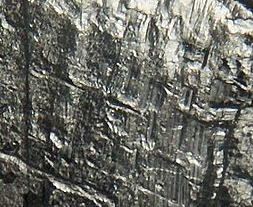
January Editorial
The rare earths

January Editorial
The rare earths
|
'Rare earths' is a common way of referring to rare earth metals, a collection of metallic elements which can be found at the bottom of the periodic table. There are three main types - the the lanthanoid series, scandium and yttrium. The lanthaniods are fifteen elements with atomic numbers 57 through 71, from lanthanum to lutetium. Scandium (Sc, atomic number 21 in the periodic table and yttrium (Y, atomic number 39) have been historically included in the 'rare earth' collection because they they occur in the same ore deposits as the lanthanoids and have similar chemical properties.
|
These metals were termed 'rare earths' because they were first extracted from relatively rare oxide-type minerals found in Gadolinite (a very dark, almost black, mineral consisting mainly of the silicates of cerium, lanthanum, neodymium, yttrium, beryllium and iron). Gandolite was mined in the village of Ytterby in Sweden. | |
|
One thing that scientists find very attractive about 'rare earths' is that although they all share similar chemical properties they they react very differently to things like light, electricity and magnetism. And this makes each of the 'rare earths' valuable in many modern technologies from superconductors and lasers to hybrid car components. The wide application of these metals in so many modern products means that the demand for them is high. Let's take Erbium as an example to show how versatile the application of rare earths can be. Erbium (atomic number 58) is used widely in so called erbium-doped fiber, the amplifiers used extensively in optical communications. An optical amplifier is a device that amplifies an optical signal directly, without the need to first convert it to an electrical signal. Small amounts of additional elements are often used to increase the efficiency of those amplifiers and these are called doped fiber amplifiers. The erbium-doped fibre amplifier (EDFA) is the most is the most frequently used fibre amplifier as its amplification window coincides with the third transmission window of silica-based optical fibre. The addition of Ytterbium (Yb, atomic number 70) to the optical fiber creates high-power Er/Yb fiber lasers used for metal welding and cutting. A completely different use for Erbium is in sunglasses where erbium oxide (which has a pinkish colour) is used as a colourant. Despite the name, rare earth metals are actually not rare at all. They are found in relatively high concentrations in the Earth's crust. In fact Cerium (Ce, atomic number 58), for example, is the 25th most abundant element. But the problem is that production of 'rare earths' is messy and environmentally unfriendly, so most countries have stayed well away from producing it. 'Most' does not include China, which now produces more than 95% of the world's rare earth supply. And it is here where a problem may arise. China now wants to tighten the export of 'rare earths'. The aim is to ensure that much of the processing and manufacturing of finished goods which use rare earths is done in China. Some manufacturers who were considering a move to China may be encouraged to do so, but this could also be a stimulus for rare earth mines to open elsewhere. | |
| _______________________________ | ||||
| Home | | | Shopping | | | Database |
© Biscuit Software 2004-2015
All rights reserved